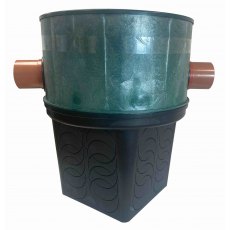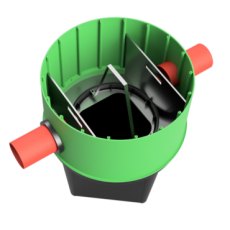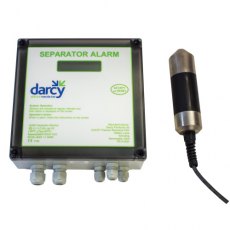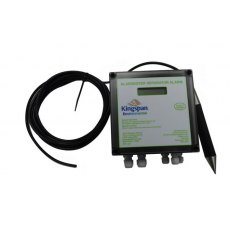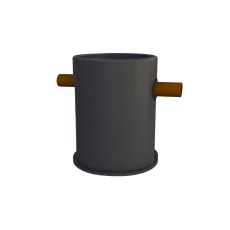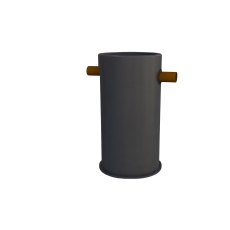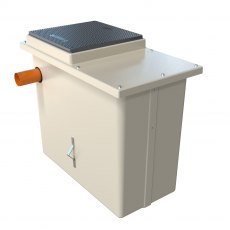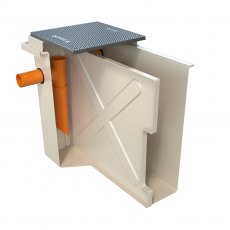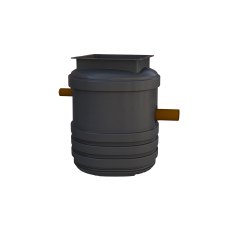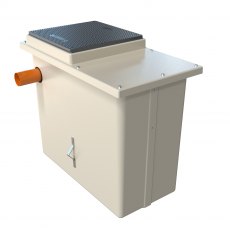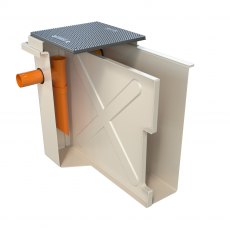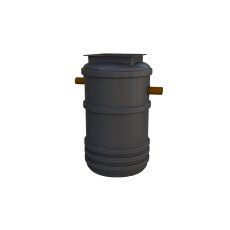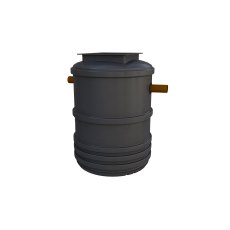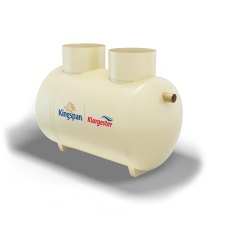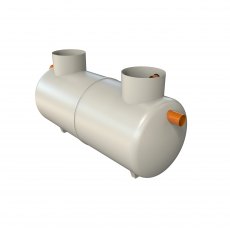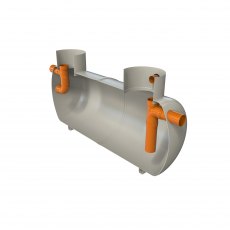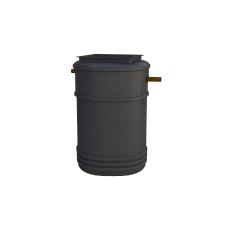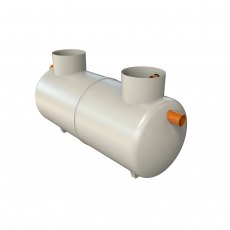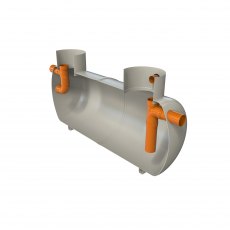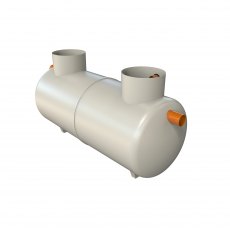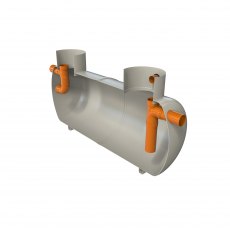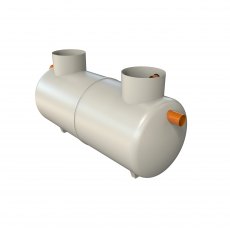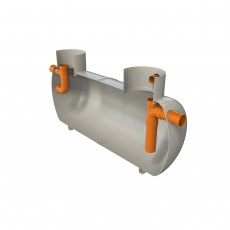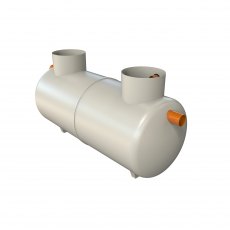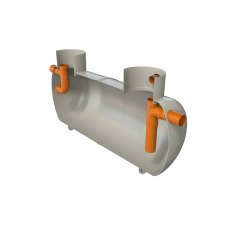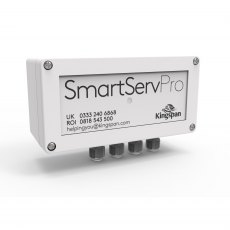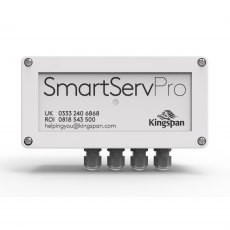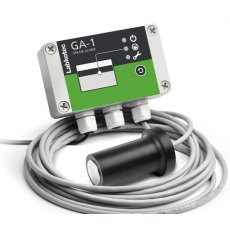Grease Traps and Separators
If you own a restaurant, a commercial kitchen, or any facility that deals with grease and oil, investing in a grease trap is essential. Grease and oil are notorious for wreaking havoc on plumbing systems. When they enter the wastewater system they solidify and accumulate, leading to clogged pipes and drains. These blockages not only result in costly repairs but can also disrupt your operations. By installing a grease trap, you capture and contain grease before it enters the plumbing system, preventing clogs and maintaining the smooth flow of wastewater.
Grease and oil are also a major contributor to water pollution. Grease traps, also known as grease interceptors, work by trapping grease and oil and preventing them from entering local water sources. They not only prevent clogs and blockages but also contribute to the overall efficiency and hygiene of your facility. By capturing grease and oil, they help maintain the cleanliness of your plumbing system, preventing odours and potential contamination. This can help you to avoid costly repairs and emergency plumbing services and help extend the lifespan of your wastewater treatment system by reducing the strain caused by grease accumulation.
Legal Requirements for Grease Traps
A trade effluent discharge to sewer licence (issued under Section 16 of the Local Government (Water Pollution) Act 1977, as amended) is a legal requirement if your business discharges trade effluent to a public sewer. These include restaurants, takeaways, pubs which serve cooked food, cafés, coffee shops, hotels, B&Bs, convenience stores and supermarkets, garage forecourt shops with delicatessen counters, food production kitchens etc. Restaurants, takeaways and establishments where food is prepared must have a Fats, Oils and Grease (FOG) Trade Effluent licence. Along with this license there is a requirement for a properly sized grease trap to be installed in the premises, based on the amount of wastewater generated from this establishment. It will be regualry inspected by Irish Water and so must be cleaned, maintained and serviced on a regular basis with records to show this has been done.
Maintaining a Grease Trap
- Use strainers in the sink
- Wipe grease out of pans before washing
- Wipe and scrape away waste into a suitable bin before washing
- Don’t pour oils down the sink - pour them into a bottle and dispose of in an appropriate manner
- Don’t leave taps running unnecessarily and repair any dripping taps
- Use dedicated wash up sinks
- Have your grease trap pumped out on a regular basis and cleaned
Grease Traps and Separators FAQs
What's a grease trap?
It is estimated that nearly half a million tonnes of grease and fat enter the UK sewerage system each year, causing blockages and damage to pipes and wastewater equipment. Grease builds up inside pipes as it sticks to pipe walls and, if it enters a natural water course, fats, oils, grease and starch (FOGS) can seriously damage the environment. This damage is extremely costly to local authorities so proper management of FOGS is heavily enforced. Failure to effectively manage buildup could lead to heavy fines or even closure of commercial businesses.
Grease traps collect and reduce the number of FOGS entering the main sewers, helping to prevent drain blockages, bad smells and pest infestations. They can be located above or below ground, inside or outside your property, but positioned within the wastewater drain that connects your sinks and appliances to the sewer system. Fats and oils are much less dense than water, so they float to the top so, when wastewater enters a grease trap, it slows the water flow down significantly, separating solids to the bottom layer, wastewater in the middle and FOGS at the top. Wastewater is then allowed to flow into the sewer, while the FOGS are trapped.
How does a grease trap work?
Water and oil don’t mix. Animal fats and vegetable oils are much less dense than water, so they float to the top. In a grease trap, waste that flows through is slowed down and allowed a settlement period where solid waste sinks to the bottom and FOGS float to the top. A trap on the outlet prevents FOGS flowing through, permitting only the cleaner middle layer of wastewater to flow into the sewer system. Your grease trap needs to be properly maintained to ensure its continued effectiveness with regular cleaning required every two to four weeks by a licensed contractor.
Grease traps ensure grease and other build-up does not enter the main sewer system. Whether they’re attached to sinks, dishwashers or any other wastewater appliance that produce FOG, grease traps all perform the same basic function, with perhaps slightly different approaches. The size of the grease trap you’ll need will depend on the flow rate of the wastewater running through it — the higher the flow rate, the bigger the grease trap. At Tanks.ie we stock a wide range of grease traps in different size options to suit every flow rate.
What are the different types of grease trap?
Grease traps are a popular method of managing fats, oils and grease. At Tanks Direct we stock two types of grease traps for FOGS management — manual and automatic. Both do the same job of separating FOGS, solids and water within the tank, helping to prevent grease related issues. By slowing the flow of waste as it enters the grease trap and letting the wastewater cool, the elements naturally separate with solids sinking to the bottom, FOGS floating to the top and water remaining in the middle. What happens with each of these elements next is what differentiates a manual and automatic grease trap.
Manual grease traps are inexpensive and cheap to install. They simply contain and hold the FOGS until they are cleaned out. Automatic grease traps, also known as Automatic Grease Removal Units (or AGRUs), are more expensive than manual grease trap. However, automatic units systematically reheat and skim out the top layer of the tank where the FOGS sit, depositing it into a container where it can be disposed of easily. A separate filter catches any solid matter, which can be easily accessed and removed for disposal.
Where would you require a grease trap?
Damage to sewer systems from FOGS can be extremely costly to local authorities and so there is much legislation surrounding best practices and correct disposal of fats, oils and grease, particularly for commercial food premises. If your property is connected to the mains drainage system and you’re serving hot food to the public or your staff, Building Regulations (document H, section 2.21) state you should have a grease trap or another effective means of grease removal fitted.
If you operate a commercial kitchen, such as a café, a pub, a takeaway service, a restaurant, a bakery or a staff canteen, a grease trap could help you to effectively manage your FOGS.
Are grease trap fumes toxic?
Grease traps can generate flammable and toxic gases over time. These gases can include methane (natural gas), hydrogen sulfide, carbon monoxide, carbon dioxide, and/or other gases depending on the greases, oils, and fats found in the grease traps. It is extremely important to the health of those that work near the grease trap that it is regularly cleaned and maintained.
What are the requirements for grease traps?
By law, Irish Water now require that all food establishments obtain a license to discharge their wastewater into the public sewer. To comply with this license, a grease trap must be installed, be regularly maintained to EU standards with records. It will be inspected regularly by Irish Water. In some counties, councils will specify that smaller domestic grease traps be installed in new one off houses or housing schemes. It is best practise to check with your local council as to what the requirements are in your area for a grease trap installation.
To find out more go to Irish Water
Are grease traps a legal requirement?
Yes, under current legislation, all food service establishments are required to have a licensed, serviced and well maintained grease trap which is sized according to the size of the establishment and the amount of food produced. This is regularly inspected by Irish Water.
To find out more go to Irish Water
What grease trap do I need?
The size of grease trap you require is determined by the amount of wastewater being discharged from the premises. The grease trap will be sized according to I.S. EN 1825 Parts 1 & 2 but it is important that it is not oversized.
Do all restaurants have grease traps?
Yes by law all food service establishments are required by Irish Water to have a licensed, regularly maintained and inspected grease trap.
What happens when a grease trap is full?
When a grease trap is full, excess grease solidifies at the top, forming a cap. With all that grease and dirt buildup it becomes hard for water to flow through the drain, leading to slow waste movement.
Can you clean your own grease trap?
No. Legally, the fats, oils & grease that is removed from your grease trap can only be disposed of using a licensed waste removal contractor.
How do I fix a smelly grease trap?
If your great trap is smelling, this may indicate that it needs to be pump and cleaned. If it has been more than a couple of months since your grease trap was last serviced this may be your first port of call. Another reason maybe improper ventilation on your grease trap / separator which is installed on larger units to allow air to circulate or it may be that some of the pipework or equipment going into the grease trap is broken. By regularly cleaning and inpecting your grease trap you should avoid the issue of unpleasant odours from your kitchen.

 Login
Login
